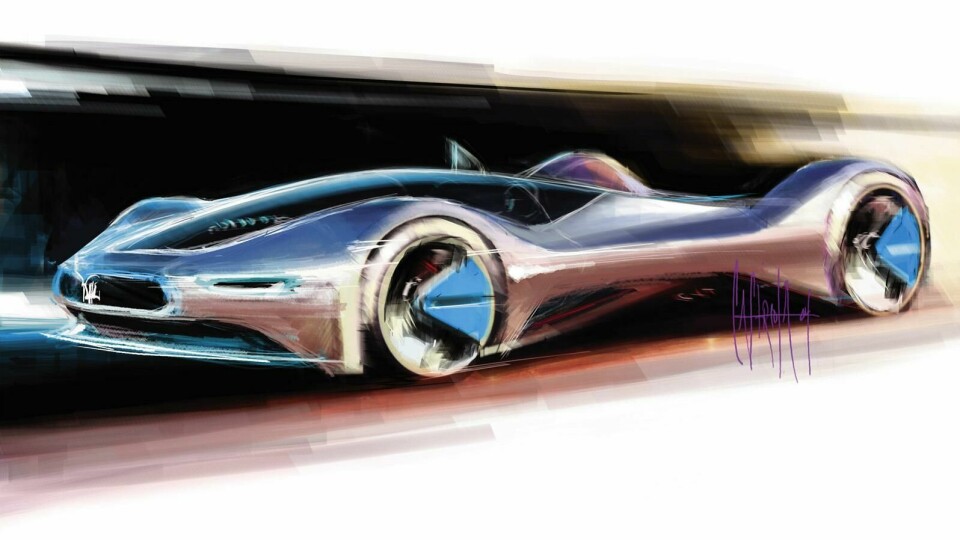
Concept Car of the Week: Pininfarina Maserati Birdcage (2006)
Recreating a classic for a new era
In the late 1950s Maserati launched a series of lightweight racing cars to conquer the 24 hours of Le Mans as well as other famous races. Known as ‘Birdcages’, the cars were constructed of a latticework of chromium/molybdenum steel tubing and covered by light sheet metal.
Maserati made a number of variations, including the Tipo 61 which became synonymous with the Birdcage program. Unfortunately the racing cars were only a modest success, and never won LeMans. But the Birdcage still holds an iconic place in the history of Maserati and Italian racing.
For the Carrozzeria Pininfarina, the occasion of their 75th anniversary was both an opportunity to revisit the Birdcage and an opportunity to project the future of Maserati. The project began with a business conversation at the Pebble Beach Concours in 2004 between Paolo Pinifarina, Franco Lodato, and Peter Aloumanis of Motorola. From there a scheme was developed to create a supercar that would serve as an homage to the classic Birdcage.
The design team chosen for the project was a who’s who of design talent. Lowie Vermeersch led the overall team with Jason Castriota and Giuseppe Randazzo working under the direction of Ken Okuyama.

The Birdcage was constructed on the carbon fibre chassis of a Maserati MC12 GT1 racing car. The engine is an F140C – a 5999cc V12 used by both Ferrari and Maserati and rated at about 700bhp.
The design, being determined by the layout of the chassis and engine, was further defined by Okyuma’s love for the radical Ferrari Modulo concept car of 1970. Okayuma wanted to retain the futuristic qualities of Paolo Martin’s iconic design.
He instructed his designers to limit the height of the car to a metre and to use 24 inch to 30 inch wheels (20 and 22 inch wheels were placed on the finished car). Four designers competed with various schemes, and Jason Castriota’s design, heavily edited by Okuyama, would emerge the winner.
The design featured enormous wheels, a Perspex (plexiglass) canopy over the passenger compartment and low front and rear ends with virtually no fasciae.

LED headlights and taillights were integrated into the corners of the body. Between the wheels the carbon fibre body dipped down to a dramatic horizontal character line that emphasized both the dynamics of speed and the massive wheels.
The interior was accessed by a large canopy which swings up and over the front end, allowing access to the cockpit. Here two seats, which were really just a raised part of the floorboard, awaited to cradle the body in a steeply raked supine position. Indeed the angle of repose was so steep that the roof canopy had to be extended forward to give the driver enough windscreen to see the road.
A space frame stretched across the front of the compartment as an homage to the original Birdcage. This frame supported a clear heads-up display unit. At the center of the steering wheel was a Motorola communications unit with various fingertip controls for connecting with the outside world. A special headset worn by the driver would communicate the driving experience to a chosen audience.

The Birdcage was revealed to the press and public at the 2005 Geneva Motor Show. It received rave reviews from the automotive press as well as designers who saw it there or in the other shows to which the car traveled. But it was understood that the car was strictly a prototype – no production car would emerge from the project, and after touring the world it was retired to Pinifarina’s collection.
The principals involved in the design of the birdcage have all moved on. Vermeersch, Castriota, and Okuyama all have their own design consultancies. Pininfarina has been reorganized and sold to the Mahindra group.
The Birdcage, along with its successor the Sintesi, were designs at the end of an era for Pininfarina. But hopefully, with new ownership more design greatness will emerge from this Italian design powerhouse.
If you would like to learn more about the story of the Birdcage, a documentary about its creation can be seen below:




















